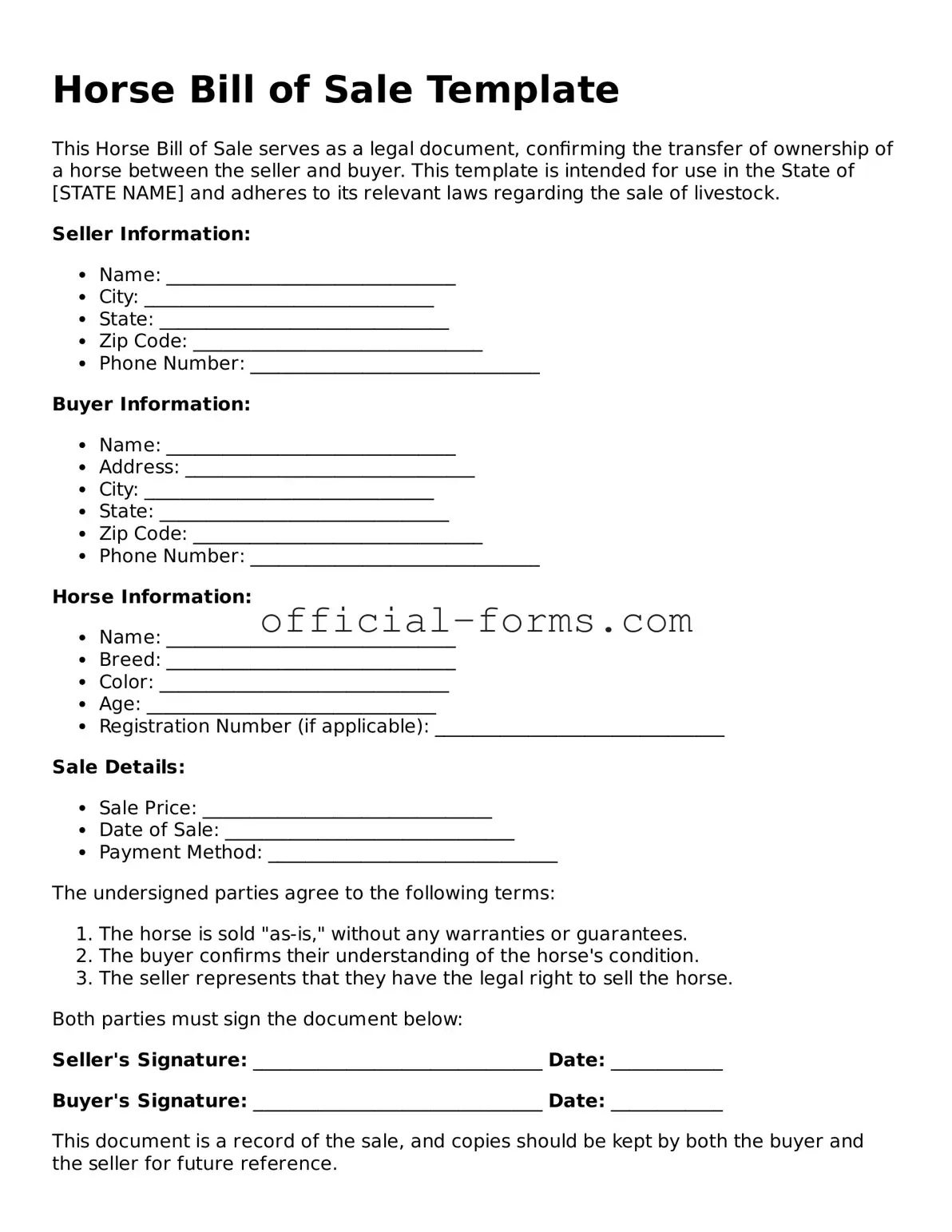When completing a Horse Bill of Sale form, individuals often overlook important details that can lead to complications later on. One common mistake is failing to provide accurate identification of the horse being sold. This includes not only the horse's name but also its breed, age, color, and any identifying marks. Without this information, there could be confusion about which horse is being sold, potentially leading to disputes.
Another frequent error is neglecting to include the purchase price. While it may seem straightforward, leaving this section blank or writing an ambiguous amount can create issues for both the buyer and seller. A clear and agreed-upon purchase price helps protect both parties and ensures that the transaction is legally binding.
Many people also forget to include the date of the sale. This date is crucial as it marks the official transfer of ownership. Without it, there may be questions regarding when the sale occurred, which can complicate future ownership claims or responsibilities.
Additionally, some individuals do not provide adequate contact information for both the buyer and seller. It is essential to include full names, addresses, and phone numbers. This information is vital for any follow-up communication or if issues arise post-sale.
Another mistake often made is not having the form signed by both parties. A signature serves as a confirmation that both the buyer and seller agree to the terms outlined in the bill of sale. Without signatures, the document may not hold up as proof of the transaction.
People sometimes fail to keep a copy of the completed bill of sale for their records. Having a copy is important for both the buyer and seller, as it serves as proof of the transaction and can be referenced in case of future disputes or questions.
Lastly, individuals may overlook the importance of including any warranties or guarantees related to the horse's health or condition. If there are specific terms regarding the horse's health, such as recent veterinary checks or any known issues, these should be clearly stated in the bill of sale. This protects both parties and ensures transparency in the transaction.
